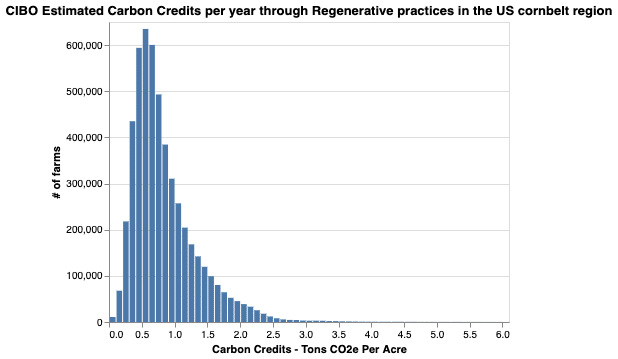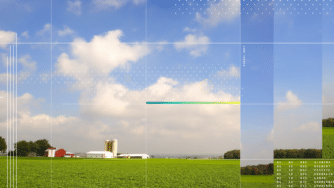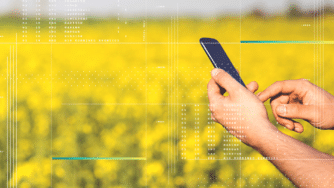By: Subhash Bylaiah
Shifting Digitalization Trends
With rising awareness of climate change, a steadily increasing number of companies are jumping onto the carbon neutrality bandwagon, with e-commerce companies leading the charge. For example, Shopify, one of the leading e-commerce platforms, has repeatedly asserted its commitment to carbon neutrality. The company followed through on its promise by offsetting all carbon emissions resulting through order deliveries over the 2020 season Black Friday and Cyber Monday weekend, by backing carbon-reducing technologies and solutions. As per the announcement, Shopify’s holiday sales rose to a record total of over $5.1 billion, resulting in a whopping 62,000 tonnes of carbon emissions due to deliveries.
As the world makes an unprecedented move towards digitalization, accelerated by the coronavirus pandemic, online e-commerce is a major component of this shift. The convenience of online shopping and enhanced customer experience through innovative technologies will propel this shift further and solidify it. However, this e-commerce revolution comes with a cost to the environment — an increased carbon footprint. The heightened awareness of companies vis-a-vis their environmental impact, coupled with consumer environment consciousness, is driving companies to adopt sustainability practices.
Quantifying the Carbon Cost of Deliveries
Quantifying the carbon footprint of online retail channels vs. brick-and-mortar businesses is a complex process. It becomes more intricate when you add in consumer behavioral factors such as increased consumption, impulsive shopping, 1-2 day shipping options, customer returns, etc. In its 2019 carbon footprint report, Amazon estimates a “carbon intensity metric”, a measure of its carbon footprint across all of its operational activities. The carbon footprint is measured in units of Carbon-dioxide equivalents(CO2e) per dollar of Gross merchandise sales. Amazon’s 2019 report estimated this to be 122.8 g CO2e per dollar. This metric is an estimate of the total carbon footprint across Amazon’s entire system. Nearly 10% of this metric, about 12g CO2e per dollar sales, comprises indirect emissions that mainly include upstream and downstream transportation, i.e., last-mile delivery and packaging.
Adobe, in a recent analytics report, projects a record holiday sales season this year. The company is estimating approximately $189 billion in sales. This represents a 33% surge over the previous year, which is largely attributed to the ongoing pandemic. Applying Amazon’s estimate of 12g of CO2e per dollar sales, the estimated carbon cost of order deliveries over the 2020 holiday sales in the US is approximately 2 million tonnes of CO2e. The total projected 2020 e-commerce sales in the US (per some estimates) is about $830 billion, which puts the carbon emissions due to deliveries at over 10 million tonnes of CO2e.
The Supply-Demand Gap in the Carbon Credit Ecosystem
There is an increasing demand for carbon credits (A carbon credit is a tradable entity representing 1 tonne of CO2e emissions neutralized). But do we have enough on offer to satiate this demand? It seems the balance can quickly shift against the supply side of the equation. One sustainable source of carbon credit generation is the practice of regenerative agriculture. US farmers in the corn-belt region can potentially generate carbon credits to the extent of nearly 179 million tonnes of CO2e per year, through sustainable practices. Just capturing a nominal 5% of the carbon credit potential could offset the carbon emissions generated from deliveries, for the year 2020. One challenge, however, is that adopting those practices comes with an economic cost to the farmer. Although many farmers practice them, it is unfair to expect our farmers to take on this additional cost burden. The need of the hour, then, is to develop practical solutions that can drive up the supply and scale to the demand seamlessly.
The CIBO Impact Solution
The CIBO Impact platform offers an effective marketplace solution that achieves this scale, with the convenience expected of our marketplaces today. CIBO with its science-based simulation models provides the scale to estimate carbon credits on any piece of land in the US’ corn-belt region. The figure below shows the distribution of CIBO estimated carbon credits across farms in the US Corn Belt states. The total estimated carbon credits across this region are about 179 million tonnes of CO2e per year. For context, this region has over 5 million land parcels, spanning over 198 million acres of cropland.

The CIBO Impact platform provides the interface for farmers to enroll their lands and offer their credits for sale. On the demand side, it gives the opportunity for buyers (both businesses and retailers alike) to purchase those credits – leading to a WIN-WIN situation for all and a happy rehabilitated planet.
References:
- Dec 1, 2020, Shopify Merchants Break Records with $5.1+ Billion in Worldwide Sales over Black Friday/Cyber Monday Weekend https://investors.shopify.com/news-and-events/press-releases/news-details/2020/Shopify-Merchants-Break-Records-with-5.1-Billion-in-Worldwide-Sales-over-Black-FridayCyber-Monday-Weekend/default.aspx
- Amazon 2019 Carbon Footprint Report https://sustainability.aboutamazon.com/environment/sustainable-operations/carbon-footprint
- Adobe 2020 Holiday Season Forecast https://blog.adobe.com/en/publish/2020/10/28/adobe-forecasts-189-billion-us-online-sales-this-holiday-season.html
- 5 ecommerce data forecasts for 2020 https://www.digitalcommerce360.com/article/5-ecommerce-data-forecasts-for-2020/
About Subhash Bylaiah
Subhash Bylaiah is a Data Scientist at CIBO, a science-driven software startup. He holds a Bachelors of Engineering from the Malnad College of Engineering and a Master of Science in Data Science from Indiana University Bloomington.



